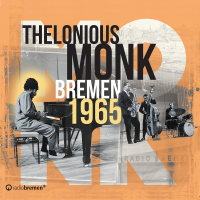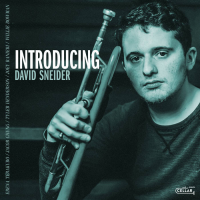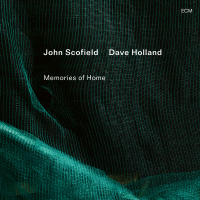Home » Jazz Articles » Bailey's Bundles » Transcription Prescription: Michele Campanella and Jon K...
Transcription Prescription: Michele Campanella and Jon Kimura Parker
Franz Liszt was a prolific transcriber of orchestral music, featuring his Beethoven and Berlioz reductions in his performances. Liszt's transcribed takes on music have never been out of the repertoire or the recording studio. Considered here is French pianist Michele Campanella's recording of the complete Verdi and Wagner transcriptions coupled with Jon Kimura Parker's modern transcription of Stravinsky's The Rite of Spring and Petrouchka.
 Michele Campanella
Michele CampanellaLiszt: The Complete Wagner and Verdi Transcriptions
Brilliant Classics
2013
Franz Liszt was a shameless show off. He was a brilliantly equipped musician who thought a lot of his talent and never hesitated to show it to lesser musicians. His transcriptions of Beethoven's Symphonies have been a cornerstone of the serious piano reserve since they were published. Liszt also transcribed opera passages for paraphrases. Two of his favorite composers were Giuseppe Verdi and his son-in-law Richard Wagner. Liszt's complete piano transcriptions of these composers are presented on Michele Campanella's Brilliant Classics volume.
Campanella's performance of the Wagner transcriptions are more compelling than those of the Verdi in part because Listz's scores are better in the Wagner. But, also, the Campanella sounds more inspired in the Wagner. "Isolde's Liebestod" and "Feierlicher Marsch zum heiligen Graal" from Parsifal end the recital properly after having gotten traction on the earlier pieces. Whether these performances compare to Leslie Howard's (as part of his mammoth Hyperion set) will be a matter of personal taste. Both have their charms and in Campanella's playing these lie nearer to the end than the beginning.
 Jon Kimura Parker
Jon Kimura ParkerRite: The Rite of Spring | Petrouchka | Solo Piano | Stravinsky / Parker
Self Produced
2013
Pianist Jon Kimura Parker is a piano dynamo who precociously decided to make his own modern transcriptions of Igor Stravinsky's most famous ballets, The Rite of Spring and Petrouchka. The simple abstract nature of the scores make this an impressive and daunting task, one that Parker does not shrink from. Parker chooses his notes well, using silence as a sword as trumpeter Miles Davis (as an extension of pianist Ahmad Jamal) did in his treatment of the American Songbook.
Parker makes his Rite shimmer and glow, and in doing so, extends the metaphor included in his thoughts on the piece: "Playing The Rite of Spring on piano I am reminded of the day I first saw an exhibition of Picasso's pencil sketches sise by side with the finished paintings. Despite the absence of color, the angular power of the lines had even a great impact." Indeed, and in the hands of Parker, Stravinsky's masterpiece takes on an other-worldly clarity that goes a long way to revealing the secrets of this famous and controversial work.
Tracks and Personnel
Liszt: The Complete Wagner and Verdi Transcriptions
Tracks: Ernani: Paraphrase de concert, S. 431a (or S. 432); Jérusalem: Salve Maria, S. 431; Il Trovatore: Miserere, S. 433; Rigoletto: Paraphrase de concert, S. 434; Don Carlo: Coro di festa e Marcia funebre, S. 435; Messa di Requiem: Agnus Dei, S. 437; Réminiscences de Boccanegra, S. 438; Aida: Danza sacra e Duetto finale, S. 436; Phantasiestück on Themes from Rienzi, S. 439; Der fliegende Holländer; Ballade, S. 441; Spinnerlied, S. 440; Tannhäuser; O, du mein holder Abendstern(Act I), S. 444; Act III: Entry of the Guests, S. 445 n.1; Ouverture, S. 442; Lohengrin; Elsas Brautzug zum Münster, S. 445 No. 2; Elsas Traum, S. 446 No.2; Lohengrin verweis an Elsa, S. 446 No. 3; Festspiel und Brautlied, S. 446 No. 1; Walhall on Themes from der Ring des Nibelungen, S. 449; Lieder aus der Musik von Eduard Lassen zu Hebbels Nibelungen, S. 496: Hagen und Kriemhild—Bechlarn; Isolde Liebestod, S. 447; Die Meistersinger von Nürnberg: Am stillen Herd, S. 448; Parsifal: Feierlicher Marsch zum heiligen Graal, S. 450.
Personnel: Michele Campanella: piano
Rite: The Rite of Spring | Petrouchka | Solo Piano | Stravinsky / Parker
Tracks: The Rite of Spring, Part 1: Introduction; Dances of the Maidens; Game of Abduction; Spring Rounds; Game of the Rival Tribes; Procession of the Sage; Dance of the Earth; The Rite of Spring, Part 2: Introduction; Mystical Circles of the Maidens; Glorification of the Chosen One; Evocation of the Ancestors; Ritual of the Ancestors; Sacrificial Dance. Petrouchka: Shrovetide Fair; The Trick; Russian Dance; Petrouchka's Room; The Moor's Room; The Ballerina; Waltz; Shrovetide Fair (Toward Evening); The Nursemaids; The Peasant and the Bear; The Merchant and the Gypsies; The Coachmen and the Grooms; The Mummers; The Scuffle; The Death of Petrouchka; The Ghost of Petrouchka.
Personnel: Jon Kimura Parker: piano.
Tags
PREVIOUS / NEXT
Support All About Jazz
 All About Jazz has been a pillar of jazz since 1995, championing it as an art form and, more importantly, supporting the musicians who make it. Our enduring commitment has made "AAJ" one of the most culturally important websites of its kind, read by hundreds of thousands of fans, musicians and industry figures every month.
All About Jazz has been a pillar of jazz since 1995, championing it as an art form and, more importantly, supporting the musicians who make it. Our enduring commitment has made "AAJ" one of the most culturally important websites of its kind, read by hundreds of thousands of fans, musicians and industry figures every month.






























